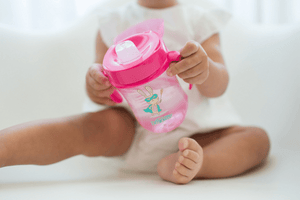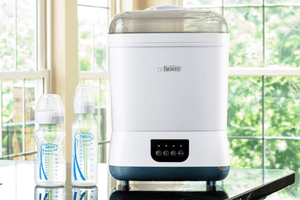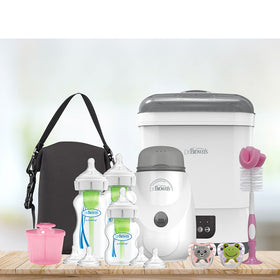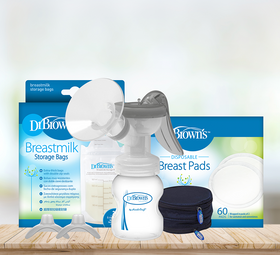
Selecting Your Bottle Teat Level
Knowing when to move to the next nipple level is an important – and sometimes confusing – part of a comfortable and happy feeding experience for you and your baby.
While most bottles offer various nipple levels that are tied to an age range (for example, 3 months+), every infant has their own feeding style, which is not necessarily a reflection of their age or size.
How Will I Know When to Switch?
There is no “right” time to change your baby’s nipple level. Some babies are content using Level 1 throughout their feeding days, while more aggressive eaters may advance sooner than expected. Your baby will offer signs if the flow is not fast enough and it’s time to move up a level. Typical signs include baby:
- Taking longer to finish eating
- Becoming fussy or irritated while eating
- Falling asleep during feeding
With newborns, especially premature babies, the nipple flow rate can actually be faster than your infant can tolerate. If your baby is exhibiting any of these signs while eating, you may want to try a slower flow (lower level) nipple:
- Gulping
- Hard swallowing
- Coughing
- Choking
- Milk dripping from the mouth
- Refusing the bottle
To address all feeding stages and styles, Dr. Brown’s offers a series of bottle nipples with increasing flow rates.
Premmie Nipple, 0 months+
- Designed for premature babies and babies who have a slower feeding preference
- Slow flow is great for breastfed babies when switching between bottle and breast; mimics the slower flow of breastfeeding
Level 1 Nipple, 0 months+
- The Level 1 nipple is included with almost all Dr. Brown’s bottles, and is a great starting point for many babies.
- Ideal choice for your infant if she is feeding well and shows no signs of feeding challenges.
Level 2 Nipple, 3 months+
- As a baby’s feeding develops and they are taking a longer time feeding from a Level 1 nipple, many parents choose to move up to a Level 2 nipple.
- Consider Level 2 if your baby is accepting early solid foods, or if their pediatrician has recommended thickening their milk.
Level 3 Nipple, 6 months+
- As a baby’s feeding develops and they are taking a longer time feeding from a Level 2 nipple, many parents choose to move up to a Level 3 nipple.
- Consider Level 3 if your baby is sitting up, if they are eating solid foods, or if their pediatrician has recommended thickening their milk.
Level 4 Nipple, 9 months+
- As a baby’s feeding develops and they are taking a longer time feeding from a Level 3 nipple, many parents choose to move up to a Level 4 nipple.
- Appropriate if your child has shown consistent feeding with no difficulties, and is taking larger amounts at the breast and bottle.
- Consider Level 4 for your baby if they are eating finger foods, drinking from a sippy cup, or if their pediatrician has recommended thickening their milk.
Y-Cut Nipple (9 months+)
- Consider the Y-Cut nipple if your pediatrician has recommended thickening your baby’s milk.
- Accommodates thicker liquids and cereals.
Some infants need a flow that is even slower that a Premmie nipple. Typically used by medical professionals with premature or medically fragile babies, the Ultra-Preemie Nipple offers the lowest flow rate from a Dr. Brown’s nipple. For more information about the Ultra-Preemie Nipple, visit the Dr. Brown’s Medical web site.







